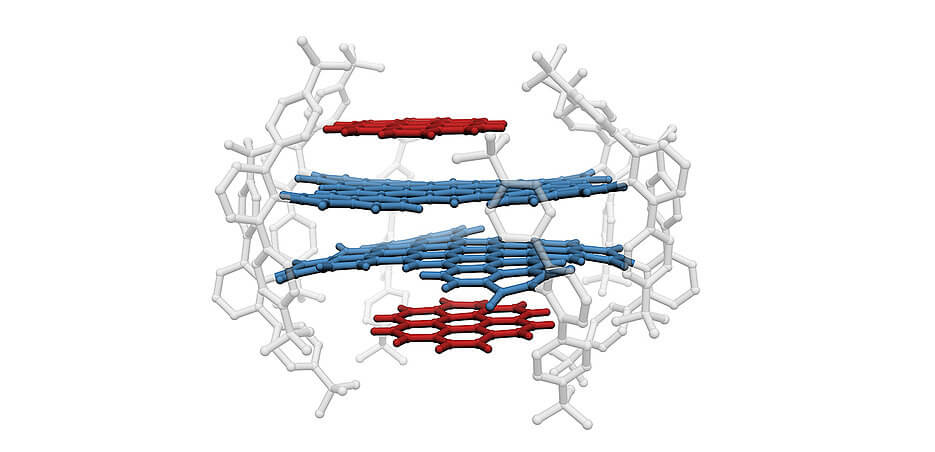Researchers have recently succeeded in developing columns of nanographene, several layers of nanographene stacked one above the other, molecular systems that can be used in the future as functional elements, for example in solar cell applications
[Translation by Dr. Moshe Nachmani]

Graphene is a carbon material that forms extremely thin layers. Thanks to its unusual properties, it is an interesting material in a variety of applied fields. This conclusion is also true for the whole family of substances belonging to the group 'polycyclic aromatic hydrocarbons' (PAHs), which can be considered as graphene cross-sections. These materials are promising materials for the field of photovoltaics or for field-effect transistors. Large polycyclic aromatic hydrocarbon molecules, in a monolayer configuration - often referred to as nanographenes - have been studied in depth for a long time. In contrast, little is known about such molecules that are organized in the configuration of multi-layer stacks in the form of a column.
Now, the way is paved for the development of an innovative approach to the production of these materials: researchers from the University of Würzburg in Germany have developed a sophisticated method for the production of multi-layered graphene nanoparticles in a precise and planned manner, as published a long time ago in the scientific journal Nature chemistry. "In our laboratory, we were able to synthesize custom-made nanographene containing two open complexes on both sides of the planar core," explains the lead researcher. These complexes were created by the connection of volumetric transducers. As a result, the nanographene can incorporate at most two smaller polycyclic aromatic hydrocarbon molecules, one on its top side and one on its bottom side. As part of their experiments, the researchers observed that the nanographene can form two- and three-layer conjugates with the same polycyclic aromatic hydrocarbons in solution. In addition, the research team was able to isolate pairs of these conjugates as solids, that is, in the four- and six-layer configuration as well as in other configurations. The structural details of these products were confirmed by quantum calculations and chemical bonding studies.
Possible application in solar cells
"Our idea about the organization of multilayer nanographenes could be applied to the design of functional organic materials," said the lead researcher. He goes on to argue that the strategy of using multi-layer nanographenes for the production of charge carriers in solar cells is promising for the future.
The article is about the research
More of the topic in Hayadan:
